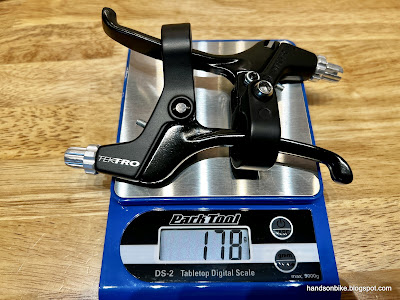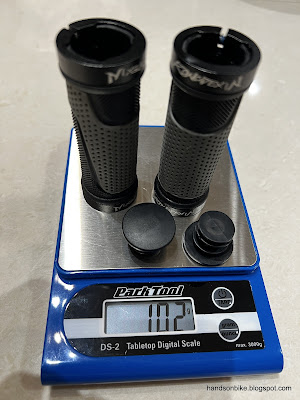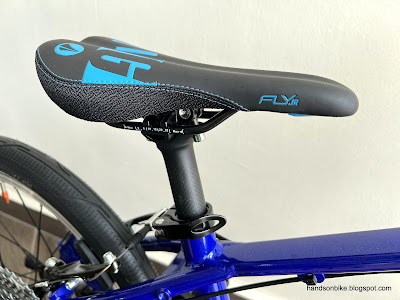Although I already had new tires for the Bestrider Pump Pro 20 kids bike, they were not ideal. The stock Kenda tires were too knobbly and not suitable for smooth roads. On the other hand, the Innova slick tires that I got earlier were too narrow. The claimed tire width is 37 mm, but the actual measured tire width is just 32 mm.
For road bikes, 32 mm is considered wider than usual. However, on kids bikes, 32 mm feels too narrow to be safe. It is still quite easy for the tire to fall into a crack or drain grille. Therefore, I decided to keep looking for wider slick tires.
Finally I found a tire that seems to be suitable for kids bikes. A suitable tire in my opinion needs to be relatively wide (35 mm or more), slick (light treads are OK), and hopefully not too heavy.
This is a relatively new-to-market 20 inch 406 tire, which is not commonly seen on folding bikes or small wheel bikes.
Continental Contact Urban tires
A size of 20x1.60 translates to 42-406, which means a claimed tire width of 42 mm.
Also available in a narrower 20x1.25 width.
Some light patterns and treads on the tire, which is fine. The centreline looks to be nearly continuous, which is good for lower rolling resistance.
The rotation direction should be followed, as the directional grooves will help to displace water safely.
Unfortunately these tires are heavy, at 347 grams each. Just a bit lighter than the stock Kenda tires which are 369 grams each.
One downside of these tires is the weight. Due to the steel wire bead construction, relatively thick rubber, and the wider width, this all adds up. The claimed weight is 330 grams, so actual weight is about 5% more. I think this weight is similar to the Schwalbe Marathon Racer (40-406 spec).
Decided to change to a high quality Zefal cloth rim tape as well, instead of the flimsy stock plastic rim tape.
Actual width when mounted on the rim is 40 mm! Safer for kids to ride without worrying too much.
Remember, these tires are mounted on the same stock rims, which have a good internal width of 20 mm.
Innova Tire Width: Claimed 37 mm, actual 32 mm
Continental Tire Width: Claimed 42 mm, actual 40 mm
Even for the Continental tires, they are slightly undersized when installed, although not as much as the Innova tires. When choosing tires based on the width, you never know what you will get, as the actual width can turn out to be narrower (Birdy AXS) or wider (Avanti Inc 3) than the claimed width, with the internal rim width playing a big part. Or you might be lucky and get the tire width spot on (Cervelo Aspero).
Tire height of previous Innova tires is about 26 mm.
Tire height of Continental tire is about 36 mm. This radial increase of 10 mm will increase the tire outer diameter by 20 mm.
Overall wheel diameter with the new Continental tires is 490 mm, a significant increase from 470 mm with the Innova tires.
Comparing the front and rear wheels, when I have changed the rear tire but not the front tire yet. Due to the brown sidewalls and shorter tire height, the Innova tires look a lot smaller.
Comparing with tire tread side by side
The tire width difference of 8 mm can be seen clearly in this comparison.
Lastly, new pedals for the bike! These are high quality Early Rider pedals, which was also used on the previous Bestrider Pump Pro 16.
Front tire also changed to the Continental Contact Urban.
Still plenty of clearance with the V brakes even with a taller and wider tire.
Using lightweight titanium quick release axles to save a tiny bit of weight.
The tread pattern on the tires look pretty good! And I think I prefer black sidewalls over brown sidewalls.
Max tire pressure is 87 PSI, but I found that around 50 PSI is sufficient based on the kid's weight.
Nearly continuous centreline on the tire, apart from the grooves for displacing water.
I'm happy with the new tires, as they are nice and wide at 40 mm, which makes it much safer for riding, without worrying about falling into cracks. Although they are relatively heavy, this also makes them pretty tough which I guess is a fair tradeoff.






























































